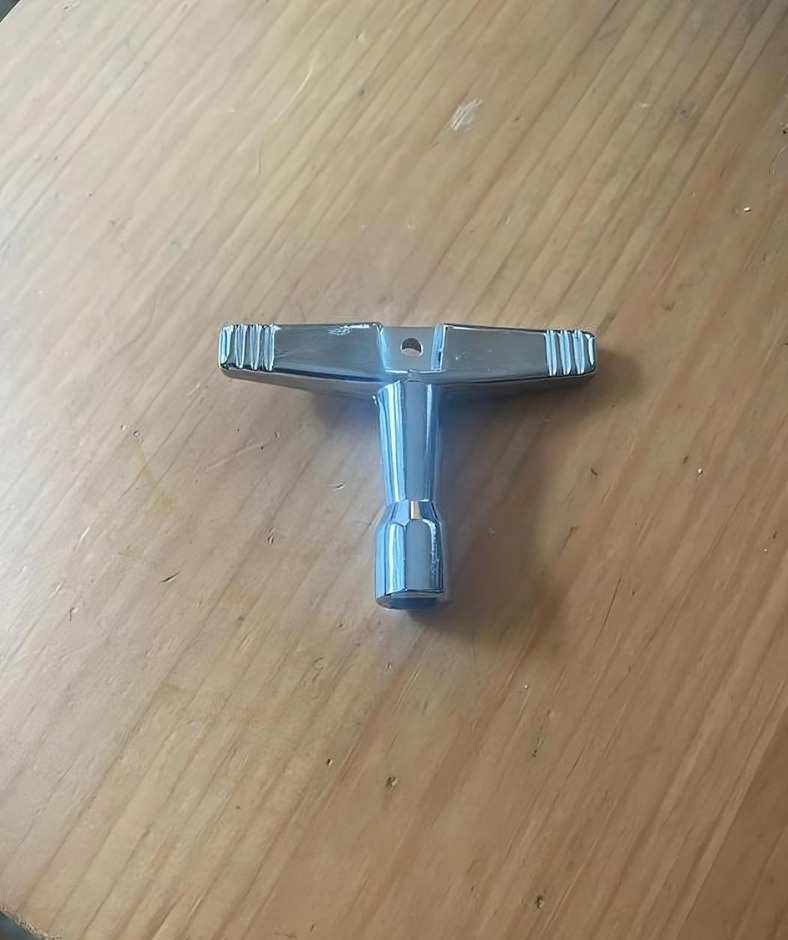The drum key—a compact, T-shaped tool—might seem like an ordinary item in a drummer’s kit, but it plays a crucial role in shaping the sound and functionality of modern drumming. This simple metal tool, often overlooked, represents centuries of innovation and evolution in percussion. In this article, we’ll explore the fascinating history of the drum key, its essential functions, and its continued importance in the world of music.

A Look Back: The Drum Key’s Ancient Origins
Drumming has been a part of human culture for thousands of years, with roots in ancient civilizations like Egypt, Mesopotamia, and China. In those early days, drums were not only instruments but also tools for rituals, ceremonies, and celebrations. However, tuning the drumheads for the perfect sound was always a challenge.
In these ancient societies, drums were typically made by stretching animal hides over wooden frames. The drummers would tighten or loosen the hide using basic tools or even their hands. Though primitive, these early efforts were the foundation of what would eventually become the drum key, allowing drummers to adjust their instruments for optimal sound.
The Drum Key’s Evolution: 19th Century Innovations
The modern drum key as we know it today began to take shape in the 19th century. With the advancement of industrialization and metallurgy, musicians sought ways to improve their instruments. Drums were no exception, and a major breakthrough occurred with the introduction of tension rods.
The drum key was developed to work with these tension rods, which fasten the drumhead to the drum shell. This T-shaped tool, with its hexagonal socket, allowed drummers to tighten or loosen the drumhead with ease, enabling precise control over the tuning of the drum. The drum key quickly became a standard part of every drummer’s toolkit, revolutionizing the way drums were played and maintained.
The Many Uses of the Drum Key
While tuning is the drum key’s primary purpose, this versatile tool is essential for several other functions as well. Let’s explore the various ways drummers use the drum key to keep their instruments in top shape.
- Tuning Drumheads
The most important function of a drum key is tuning. Drumheads are attached to the drum’s shell with tension rods, and by turning the drum key, drummers can adjust the tension. More tension results in a higher pitch, while loosening the rods lowers the pitch. Whether a drummer prefers a tight, crisp sound for jazz or a deeper, punchier tone for rock, the drum key makes it easy to achieve the desired sound. - Replacing and Repairing Drumheads
Drumheads don’t last forever. Over time, they wear out or may even break during a performance. When this happens, a drum key is essential for removing the old drumhead and replacing it with a new one. Drummers can use the key to release the tension rods, lift off the old drumhead, and quickly install a new one. This ability to make quick repairs is invaluable, especially during live performances. - Adjusting Drum Hardware
Drum kits are made up of various components, like snare drums, toms, and cymbal stands, many of which need periodic adjustments. A drum key is often the tool of choice for these adjustments. Many drum kit parts, such as bolts and screws, are designed to be compatible with a drum key, allowing drummers to make changes to their setup quickly. Whether it’s adjusting the height of a stand or the angle of a tom, the drum key is a must-have tool for customizing a drum kit.
The Drum Key’s Impact on Different Musical Genres
The drum key has had a significant influence on various musical genres by enabling drummers to fine-tune their sound and performance. Its impact can be felt across everything from jazz to rock and even in the recording studio.
- Jazz
Jazz drummers often need a higher-pitched, more resonant tone to complement the intricate rhythms and brushwork characteristic of the genre. The drum key allows them to adjust their drumheads for precision tuning, making it possible to experiment with different tonal textures during performances. - Rock
Rock drummers rely on a powerful, deep sound to cut through the noise of electric guitars and bass. The drum key lets them fine-tune their drums to create the punchy, resonant sound needed for rock music. On stage, a drum key allows quick adjustments to keep their drums sounding consistent throughout the performance. - Studio Sound Engineering
In the studio, the drum key becomes even more important as sound engineers use it to perfect the tension of the drumheads. This helps in achieving the right balance of tone, sustain, and resonance, which can make a big difference in a recorded track. A well-tuned drum set can add depth and clarity to the music, making the drum key essential for studio recordings.
The Drum Key Today: A Timeless Tool
Despite advances in drum technology, the fundamental design of the drum key has remained the same for over a century. Its continued use is a testament to its effectiveness. For drummers, both beginner and professional, the drum key remains an essential tool. Its simple design belies its importance in the world of music.
Conclusion: The Legacy of the Drum Key
From ancient beginnings to modern music, the drum key has evolved into one of the most essential tools in a drummer’s kit. This small device helps drummers achieve the perfect sound, replace drumheads efficiently, and make quick hardware adjustments. Whether on stage or in the studio, the drum key plays a vital role in the art of drumming, ensuring that this centuries-old tradition continues to thrive in today’s music world.





